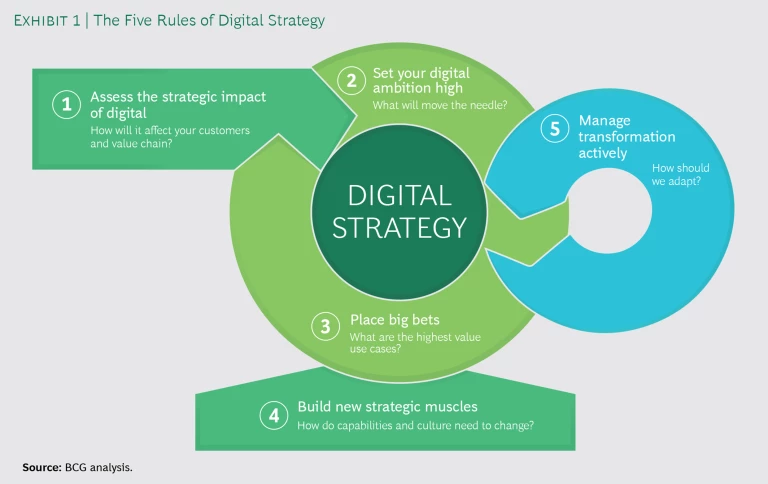Core Principles of Growth Strategy for Digital Products and Platforms
A robust growth strategy for digital products and platforms is built on a foundation of customer-centricity, data-driven decision-making, and continuous iteration. Below are the fundamental components and best practices, distilled from expert sources.
Strategic Foundations
- Define a Clear Vision and Objectives: Start by articulating a compelling product vision and set measurable business objectives that align with your organization’s goals, such as increasing revenue, reducing churn, or improving conversion rates.
- Deeply Understand Your Audience: Use market research, analytics, and customer feedback to build detailed buyer personas. Understand their needs, behaviors, pain points, and motivations to ensure your product delivers real value.
- Audit Your Digital Landscape: Assess your current digital assets—websites, apps, social media, marketing channels—to identify strengths, weaknesses, and opportunities for improvement.
- Competitive Benchmarking: Analyze competitors’ offerings and strategies to spot market gaps, differentiation opportunities, and areas where you can excel in customer experience.
Growth Frameworks and Tactics
- Product-Led Growth (PLG): Focus on delivering value through the product itself to drive acquisition, conversion, and retention. Key tactics include fast onboarding, internal virality (e.g., inviting team members), and tracking “North Star” metrics that reflect user value.
- Growth Hacking: Employ a culture of rapid experimentation to test hypotheses, scale what works, and discard what doesn’t. The AAARRR model (Awareness, Acquisition, Activation, Retention, Revenue, Referral) provides a structured approach to growth hacking.
- Agile and Data-Driven Iteration: Continuously test, measure, and refine your product based on user feedback and performance data. Use A/B testing, user interviews, and analytics to validate assumptions and optimize the user journey.
Technical and Operational Excellence
- Modern Architecture: Adopt microservices and API-driven architectures for flexibility, scalability, and faster feature delivery.
- Leverage Advanced Technologies: Integrate AI, machine learning, and IoT to personalize experiences, automate processes, and create innovative, connected services.
- Cross-Functional Collaboration: Ensure close alignment between product, engineering, design, and marketing teams. Secure executive buy-in and allocate resources effectively to support growth initiatives.
Measurement and Optimization
- Set KPIs and Success Metrics: Establish quantifiable metrics aligned with your objectives to track progress and inform decision-making. Regularly monitor these metrics to stay on course.
- Optimize Digital Presence: Ensure your website and digital channels are user-friendly, mobile-responsive, and optimized for search engines. A multi-channel approach increases reach and engagement.
- Content and UX Strategy: Craft engaging, on-brand digital experiences using best practices in UX design and content strategy to maximize conversion and retention.
Adaptability and Market Alignment
- Stay Attuned to Market Trends: Regularly analyze industry trends, technological advancements, and shifts in consumer behavior to keep your product relevant and competitive.
- Formulate and Validate Strategy: Use a two-phase approach: first, formulate your strategy by identifying obstacles, opportunities, and resolutions; then, validate through experiments to ensure practical effectiveness.
Summary Table: Key Growth Strategy Components
| Component | Description |
|---|---|
| Vision & Objectives | Clear, measurable goals aligned with business outcomes |
| Customer Understanding | Deep insights into user needs and behaviors |
| Competitive Analysis | Benchmark against competitors to find differentiation opportunities |
| Product-Led Growth | Drive growth through product value and user experience |
| Growth Hacking | Rapid experimentation and scaling of effective tactics |
| Agile Iteration | Continuous testing, learning, and optimization |
| Technical Innovation | Use of modern architectures, AI, ML, and IoT |
| Cross-Functional Teams | Collaboration across product, engineering, design, and marketing |
| KPIs & Metrics | Quantifiable indicators of success, regularly monitored |
| Market Trend Awareness | Ongoing analysis of industry and consumer trends |
Conclusion
A successful growth strategy for digital products and platforms requires a blend of strategic planning, customer empathy, technical innovation, and relentless optimization. By focusing on these fundamentals, organizations can build scalable, resilient, and user-centric digital offerings that thrive in competitive markets.





